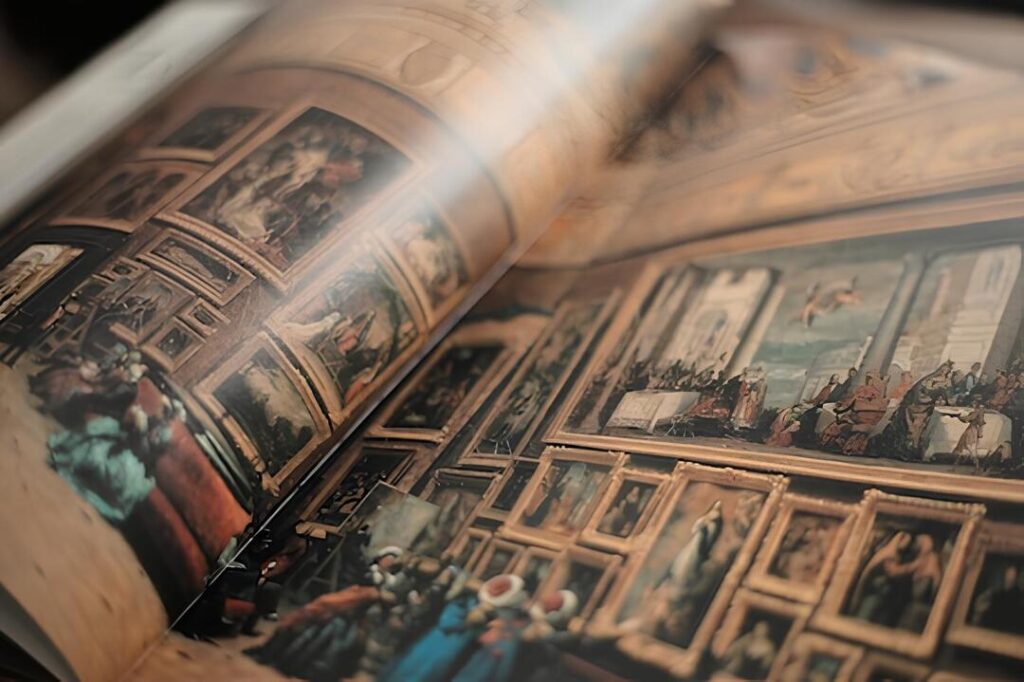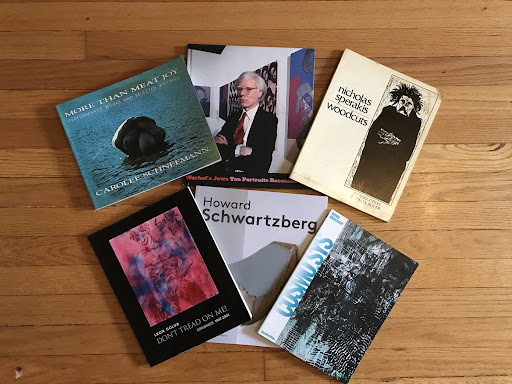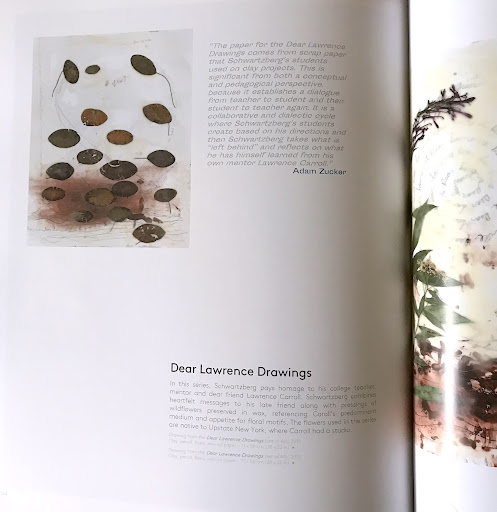Publishing an Artist’s Monograph about Your Work
A guide to the various types of artist’s monographs, including a comprehensive overview and a deep look at an artist’s practice.

Artists: Have you considered the benefits of publishing as a way to boost and contextualize your work? In addition to showing your work in exhibitions and accompanying catalogues, publishing a thematic collection of your own art is a great way to organize, display, and explain your art. One particular style of artist’s book is the monograph.
This post will examine the structure(s) of an artist’s monograph and provide you with some ideas for developing your own.
What is an artist’s monograph?
An artist’s monograph is a concise publication of a single artist’s work. Monographs can be extensive or niche in what they present. They can take on a more retrospective purview, hone in on a series of works, or even provide an intimate and detailed look into one particular work.
When done well, they provide multiple perspectives into the form, function, content, and context of an artist’s practice, showing why their work is both visually compelling and culturally enriching. This is precisely why major galleries like David Zwirner, Michael Rosenfeld Gallery, and Pace all have art publishing houses.
Because a monograph is less expensive than a larger art-centered publication like an exhibition catalogue, they are accessible for both the avid art world follower and weekend warrior alike. My own bookshelves are overflowing with them!

The types of artists’ monographs
When publishing an artist’s monograph, there is a lot of room for creativity. A monograph can be structured as an interpretative analysis of an artist’s work written by the artist themselves and/or a selection of scholars, or as a wordless or an almost-wordless picture book.
Depending on the scope of your work and what you want to communicate with an audience, an artist’s monograph is a great way to refresh and highlight aspects of your practice in a unique manner.
So let’s dive into the types of monographs you might consider for your artwork (or the work of your artists if you are a gallerist).
- A contextual analysis
All artists want to believe that their work speaks for itself, but sometimes even compelling visual artwork needs further explanation. If a very conceptual or abstract piece of work is complemented with a concise background text or analysis, it can help us to both understand the artist’s own intent and develop critical skills to make our own inferences and connections to the art. One of the most unfortunate actions an artist can do to turn off viewers is to eschew literary accompaniment.

I was recently asked to contribute to a monograph on the artist Howard Schwartzberg. The book provides a comprehensive, yet concise overview of Schwartzberg’s paintings, drawings, and installations made over the course of more than three decades. Along with full pages of high-quality color reproductions of his art, the book features essays, excerpts, and quotations from art historians, curators, and Schwartzberg himself.
Schwartzberg’s monograph is organized into sections based on the media he works with. Within each materials-based section are subsections focusing on a particular theme or aesthetic series. Excerpts of my essay on his drawings and works on paper appeared throughout the drawings section to supplement specific works of art and aesthetic concepts.
- The deep look
Almost devoid of any written explanation, the deep-looking version might have a short introductory text and/or an artist’s statement that gives us a primer to the images that follow. Sometimes there will be an interview or a collection of excerpts with quotations either by the artist or remarks from critics about the work.
In this iteration, the pictures do the talking, so this format might be more suited for artwork that has an apparent narrative quality, such as the illustrative works of R. Crumb or Marcel Dzama.
Dzama’s Behind Every Curtain (Zwirner Books, 2011) is made up entirely of reproductions of drawings and paintings from a 2011 exhibition he had at David Zwirner’s New York gallery. The monograph is only eighty pages and contains just six words of text: a dedication to Mexican artist Luis Miguel Suro. It is a joy to flip through because Dzama’s work is so whimsical and presented in a way that prompts your imagination to run wild.
A much longer example is R. Crumb’s The R. Crumb Coffee Table Art Book (Kitchen Sink Press, 1998). This book is a must-have for both longtime and new fans of Crumb’s work. It’s a compilation of various comic books, drawings, and commercial work, making it both an accessible and comprehensive primer on his work.
Be book smart
Hopefully these two different approaches to an artist’s monograph will inspire you to begin planning your own publication. Whatever style or format you choose, there are some basic tenets to adhere to, such as ensuring that you use high-quality and well-focused images and that you proofread your text (especially images captions) carefully.
If you need help with any aspect, from your initial planning to proofing and publishing, Flatpage offers both editorial and publishing services.
Get a rate quote or schedule a consultation call by clicking below.